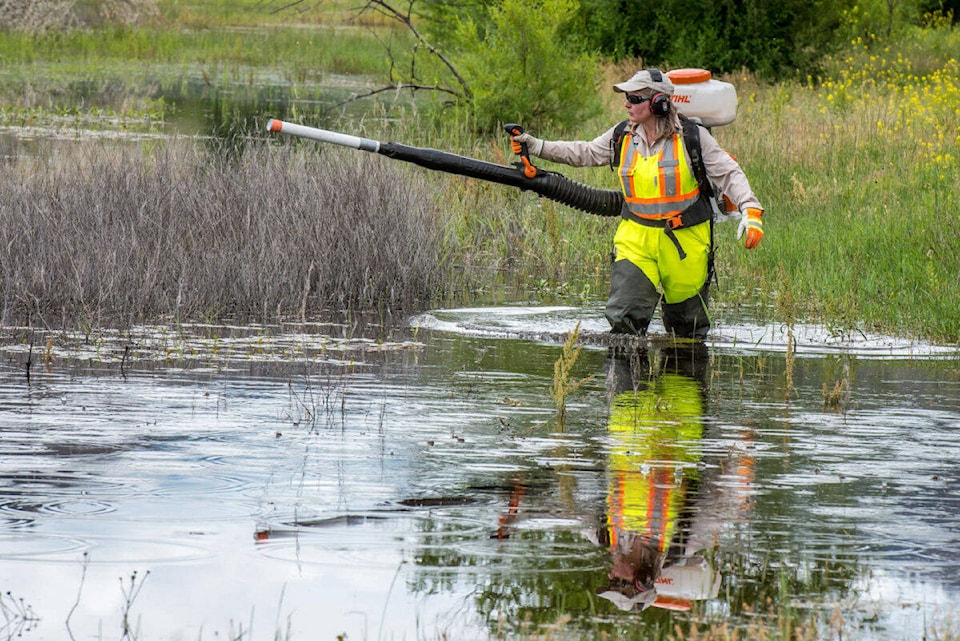The Regional District of Okanagan-Similkameen (RDOS) will be taking a regional approach to mosquito control in 2023.
Traditionally the village of Keremeos and town of Princeton have opted out of the Nuisance Mosquito Control Program but under the newly approved approach, they will have to pay in too.
The changes take effect in 2023.
The cost to homeowners is the same as a cup of Tim Horton’s coffee, said Liisa Bloomfield, RDOS manager of engineering.
Bloomfield presented three options to deal with mosquitoes to the RDOS board at the March 17 meeting. The first being a regional approach, the second being a sub-region option and the third keeping the status quo.
Area G (rural Keremeos) director Tim Roberts supported a regional approach, saying he probably spends more on mosquito repellent than he would for the annual cost of a regional approach.
“Mosquitoes don’t see borders,” Roberts added.
But Naramata director Karla Kozakevich disagreed saying the mosquitoes seem to know not to come into Naramata.
“We don’t have a mosquito problem in Naramata but I do understand the need for a regional approach,” she said.
For a home that costs $600,000, the mosquito program will add an additional $2.95 to its tax bill.
The RDOS Nuisance Mosquito Control Program is service driven by a property owner request that begins in spring and continues into September, operating on private lands only.
READ MORE: Mosquito control since 1974 in RDOS
Property owners with existing treatment sites are contacted by mail in early spring to ensure that monitoring and treatment can occur as soon as larvae are observed.
RDOS CAO Bill Newell said it is too late to implement the regional approach into the 2022 budget but will be ready for 2023.
The RDOS mosquito control crew samples standing water at identified sites throughout the region for the presence of mosquito larvae. If the site requires treatment, a naturally occurring granular bacterial larvicide called Bacillus Thuringiensis Isrealensis (Bti) is applied to the water.
This bacteria kills mosquitoes and biting black flies at their larval stage but does not kill adult mosquitoes or harm non-target species: insects, amphibians, reptiles, fish, birds or mammals. When water bodies get too large to treat manually, a helicopter is deployed to ensure adequate coverage.
To report a typo, email: editor@pentictonwesternnews.com.
<>@PentictonNews
newstips@pentictonwesternnews.com
Like us on Facebook and follow us on Twitter.
